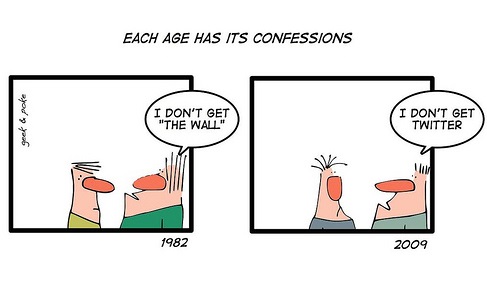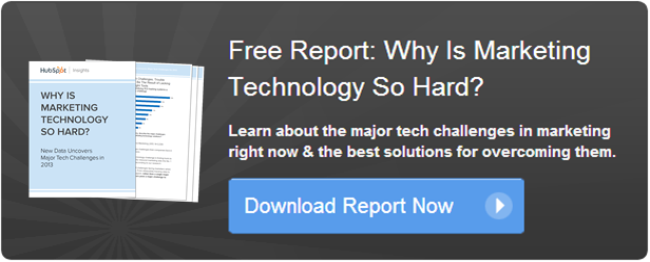 Facebook just rolled out changes to its News Feed, along with policy changes that will make it easier for marketers to stay on top of what Facebook is doing with its algorithms. And that’s great, right? More information, greater transparency – that’s always good.
Facebook just rolled out changes to its News Feed, along with policy changes that will make it easier for marketers to stay on top of what Facebook is doing with its algorithms. And that’s great, right? More information, greater transparency – that’s always good.
But something occurred to us here in the HubSpot blogging team boiler room as this was happening: How do marketers keep up with all this stuff? Facebook has made a bunch of announcements this year that rose to the level of being billed as an “event.” Facebook’s platform is constantly changing and evolving -- so much so that keeping up with it could be a full-time job.
And Facebook is only one platform to worry about. If you're a marketer you're also no doubt dealing with Twitter, LinkedIn, and YouTube, and maybe Google+, Pinterest, Instagram, and others.
How do you cut through the clutter? How do you learn new things? More important, how do you learn which new things are worth learning? How do you develop a BS meter to determine what is hype and what is really going to help your business?
We asked around and came up with some suggestions:
1) Trust your gut.
“As for which platforms, I look at it this way: if I enjoy using it and it makes sense, then I focus on those. Play with everything, but select a few,” says Frank DeMaria, CEO of Social360 Monitoring in New York and former SVP of Communications for the NASDAQ stock exchange. At NASDAQ, DeMaria focused most of his energy on Tumblr, Facebook, and Twitter, but also used LinkedIn and tinkered with Instagram. He says he started by finding out what platforms people on his staff were already using.
“You have to feel it,” he says. “Do you have people on your team who naturally want to do this stuff? That’s where I start when picking a platform.”
2) Your gut can only take you so far.
"You have to measure, measure, measure,” says Chris Heatherly, vice president and general manager of Disney Interactive Worlds in Los Angeles. “It’s the only way to know whether something is worthwhile. As an example, we used to spend a lot of money on SEM only to find out that none of the traffic it brought us was incremental. The same can happen (or worse) with social because social is fundamentally about engaging with a continuing audience. It’s worth spending some amount to reengage your existing audience, but you have to know where that tipping point is. At what point are you paying to reacquire the same customer or try to reenage a user that statistically, you’ve lost? That’s the trick.”
3) Don’t get “shiny object syndrome.”
It’s easy to get swept up in the hype around whatever the latest and greatest new social toy might be. “A mistake I sometimes make is I am too ‘wowed’ by a tool, so that I rush to use the tool without thinking if it’s strategic or not,” says Ross Levanto, a senior vice president at Schwartz Communications in Boston. That said, “there is little actual research available as to what social media strategies are effective, especially if you’re doing B2B,” Levanto says. “It’s still acceptable to use a lot of trial and error, I guess.”
4) Learn by doing.
The way to keep up with the rapid pace of change in social is, “by not listening to the pundits,” says Rich Levin, SVP & Editor in Chief at Gregory FCA, a PR agency in Ardmore, Pennsylvania. “By doing. By inventing, not copying. By understanding that social isn’t rocket science, despite how the pundits try to make it appear to be so, because that’s how you get paid to consult.”
5) Match the platform to your audience.
If you’re in the sports biz, you probably want to use video (it’s dynamic, and exciting) but you may be less interested in platforms like Pinterest, which is all about nice-looking still photos. “Our biggest social platform is actually YouTube, which is also home to our biggest global audience and next generation of fans,” says Angela Leaney, EVP of brand marketing for the Harlem Globetrotters. “Pinterest is not a good home for our brand of sports entertainment -- not yet, anyway.”
6) Use what works for others.
“For B2B I’ve found Twitter and LinkedIn groups are much more effective and worth the time,” says Amico. DeMaria agrees: “LinkedIn is great from a B2B perspective. People on there almost want to be pitched a little bit. It’s the best business platform. It’s less sexy, but it’s a great platform.”
If B2B marketers are seeing success on LinkedIn, maybe other B2B marketers should follow suit. Same goes for ecommerce marketers seeing success on Pinterest, media organizations seeing success on Twitter, etc.
7) Think like a symphony conductor.
No one tool can do everything. Use several different platforms but find ways to make them work together and complement each other.
“These things can all play with each other,” says DeMaria of Social360. When he ran communications at NASDAQ, DeMaria used Twitter to post little bursts of information -- indices, what’s trending, and so on. “Then we’d use Facebook to say, 'Here’s a cool picture of a celebrity at the market,’ and Tumblr was what we used for actually publishing news. We’d create original pieces of content, things that were interesting and thoughtful.”
Bottom line: You can’t do it all. So choose your platforms wisely, based on the audience you want to reach and the kind of content you want to deliver. And accept that your job involves constant change and "lifelong learning."
If you're looking for more help evaluating new social networks, check out this post. Or if you're looking for help determining when it's time to pull the plug on a social network, we've got some help for you in this post, too.
Image credit: Search Engine People Blog

